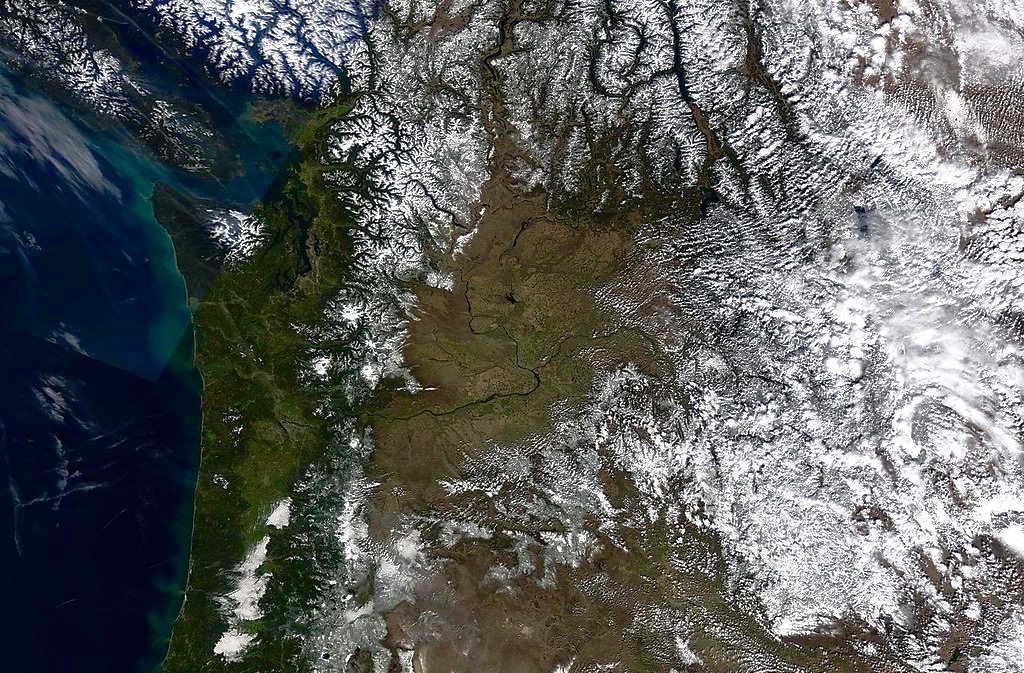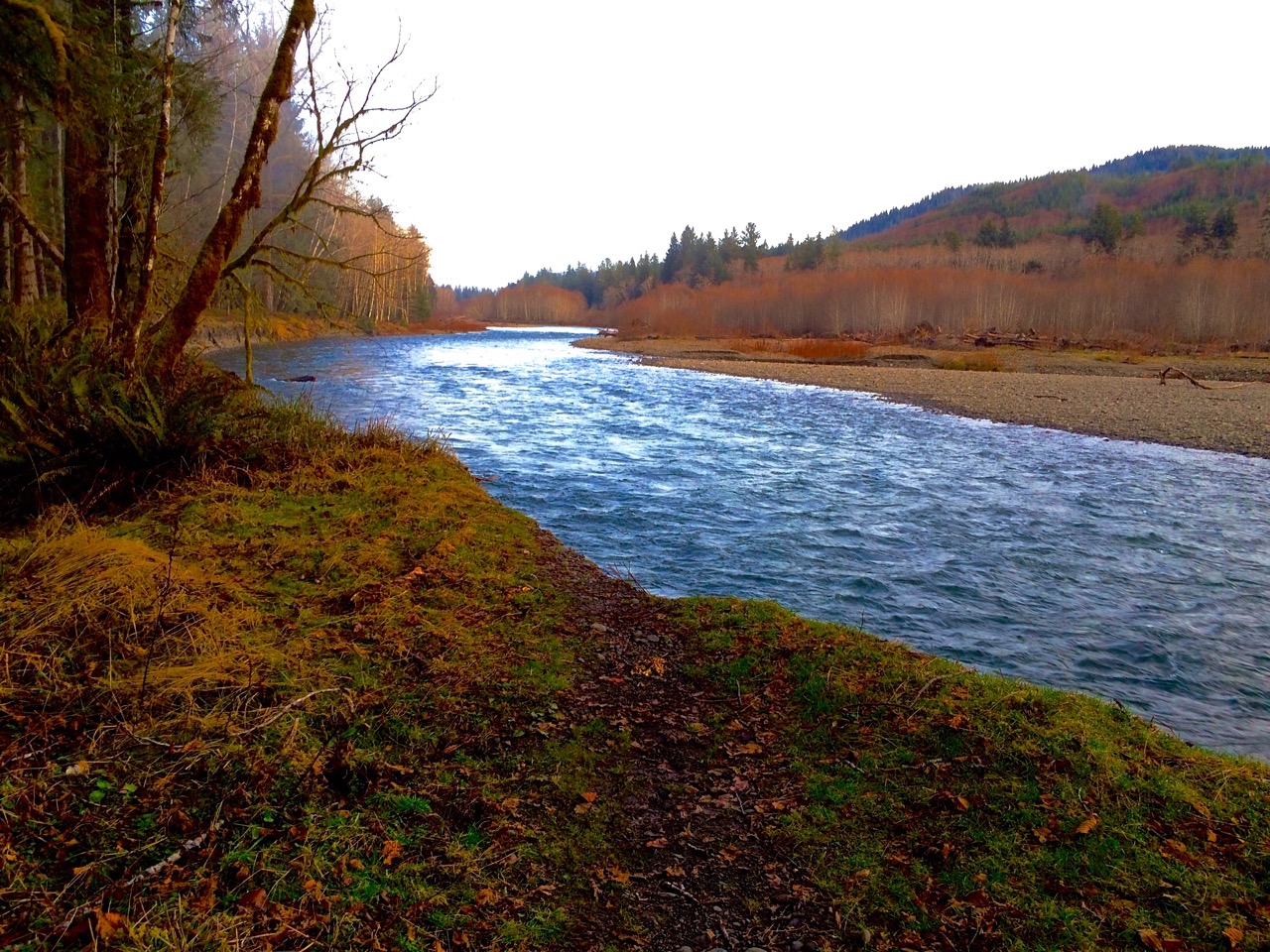For anyone that has headed out on a hike into the elevation of the Olympics, you know that the snowpack in the mountains is quite impressive this year. Last year, when we should have been neck deep in powder on our favorite trails, we were met with snow-free summits and dry creek beds. Hikers were spoiled last winter, heading out into the higher elevations early in the year, fueling an entire year of wanderlust quenching treks and destinations. Last year, the snow was non-existent and people roamed the mountain tops like the mountain goats placed in the region. That was then. This is now. We have a huge snowpack and I confidently predict it will last until at least June.
The snowpack of the Olympic Mountains appears to be quickly recovering after last year’s ridiculousness we had during the great drought of 2015. As of the first day of spring, 2016, the Olympic Mountain snowpack is 122% above normal. On the same date last year, we were at 7% of normal. The drought has obviously ended long ago and the mountains are healthy, as is the snowpack. While this is great news for skiers, salmon and people generally concerned with the health of the environment, hikers appear to be a bit confused by the change in snowpack from last year.
Each day, I receive a few messages, emails or texts asking me if “such and such” route is clear of snow. They ask about Mount Ellinor, Colonel Bob, Mount Townsend and Lake of the Angels. They ask about mountains so inundated with snow right now, that only the heartiest of adventurers dare scale the steep, avalanche prone regions in search of adventure. They ask because they want to explore and they want to get outside. I don’t blame them, I want to hit up some snow-free trails in high elevation soon, too. However, the reality of the snowpack for the winter of 2015-16 is that it is going to hang around for awhile.
To better help show how deep the snow is in some of the more popular destinations in Olympic, I gathered information from snotel sites around the Olympic Peninsula. As I am writing this on March 21st, 2016, there is snow at 1,500 feet of elevation in the Hoh, Quinault, Sol Duc, Elwha and basically everywhere else on the Olympic Peninsula. Yes, the lowland snow is melting fast, but the snow level is hovering around 3,000 feet all week, so anything above that is going to stick around.
If you want to know how the snow is on your favorite hike on the Olympic Peninsula, shoot us a message on our Facebook Page.

How Deep Is the Snow Right Now?
The Buckinghorse station is located 5km NW of the Enchanted Valley in the Quinault region of Olympic National Park and sits at 4,870 feet, currently has a snowpack of 144 inches. Compared with 11 inches at this time last year, the area appears to be in good shape. If historically average snowmelt occurs, the peaks above 4,500 feet in the Quinault region won’t be free of snow until July.
The Mount Crag station is located just north of the Dosewallips River and sits at 4,314 feet above sea level. As of Match 21st, 2016, the current snowpack is 96 inches. On this date in 2015, it was a measly 5 inches. This snowpack will more than likely last until at least June. That means that with a regular snow melt, places like Upper Royal Basin, Upper Lena Lake, Lake of the Angles and similar hikes will have snow on them until summer officially starts.
The Dungeness River snowpack station is located at 4010ft in the “rain shadow” region of the Olympic Mountains. Typically, this area receives less precipitation than anywhere else on the Peninsula, giving it the first snow-free mountain hikes of the year. Right now, the snow depth is resting comfortable at 22 inches, much more than the 2 inches we had on this date in 2015. There is a good chance that this region could be snow free my the end of April, if the snow melts at the same pace it did in 2014. My guess is that places like Mount Townsend and Mount Baldy, even Mount Buckhorn and Marmot Pass could have lingering snow well into June.
Finally, at 5,010 feet, the monitoring station at Waterhole is located just below Hurricane Ridge in Olympic National Park. As of the first day of June, the area has a snow depth of 93 inches. Last year on this date, this station had a snowpack of 7 inches. In the past week, 10 inches of snow has melted from the Waterhole Station, but that level of melt-off won’t continue. It will be mid-June at the earliest before this station is snow-free. That means that hikes around Hurricane Ridge and the northern Olympic Mountains won’t be free of snow until probably July.

Where Should I Hike?
Since the snow is going to linger well into summer for the upper ridges and stellar destinations of Olympic National Park and forest, you will need to start looking at the lower elevation hikes, unless you want to posthole and route find. That means diving into often overlooked areas like the Gray Wolf, the Dungeness and the North Fork of the Quinault are in order. However, keep in mind that with the large snowpack, creek crossings at lower elevations will be rough and sometimes not possible. This is the wettest winter on record for many areas around Washington State, and it will take weeks and weeks of sun and warmth before things dry out, trails get repaired and creeks slow to a trickle from their current raging torrents.
If you do want snow free hikes in Olympic National Park, I highly suggest picking up a copy of my Definitive Guide to Olympic National Park. It has 75+ trail options, as well as hundreds of other great destinations and possible adventures.




